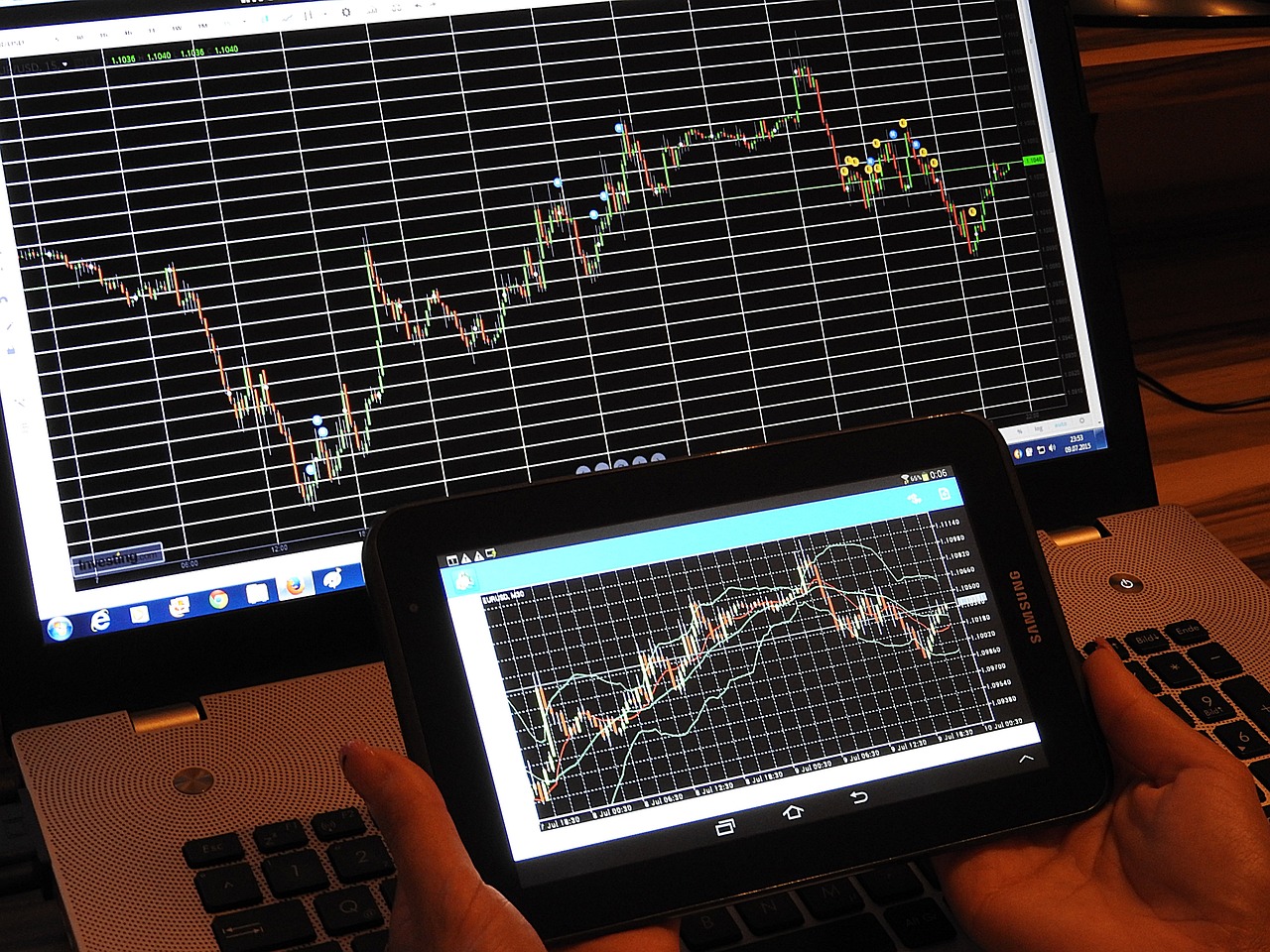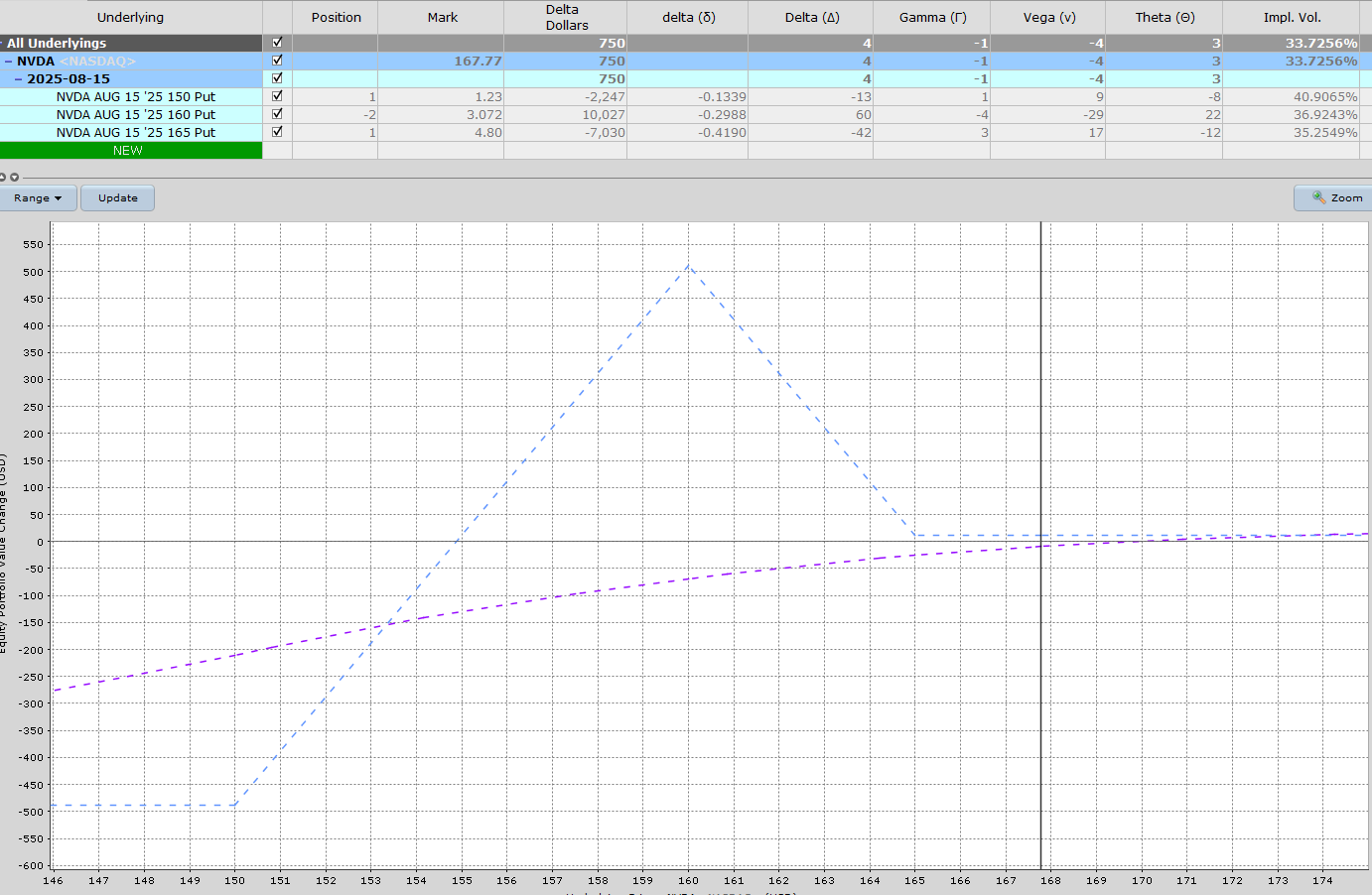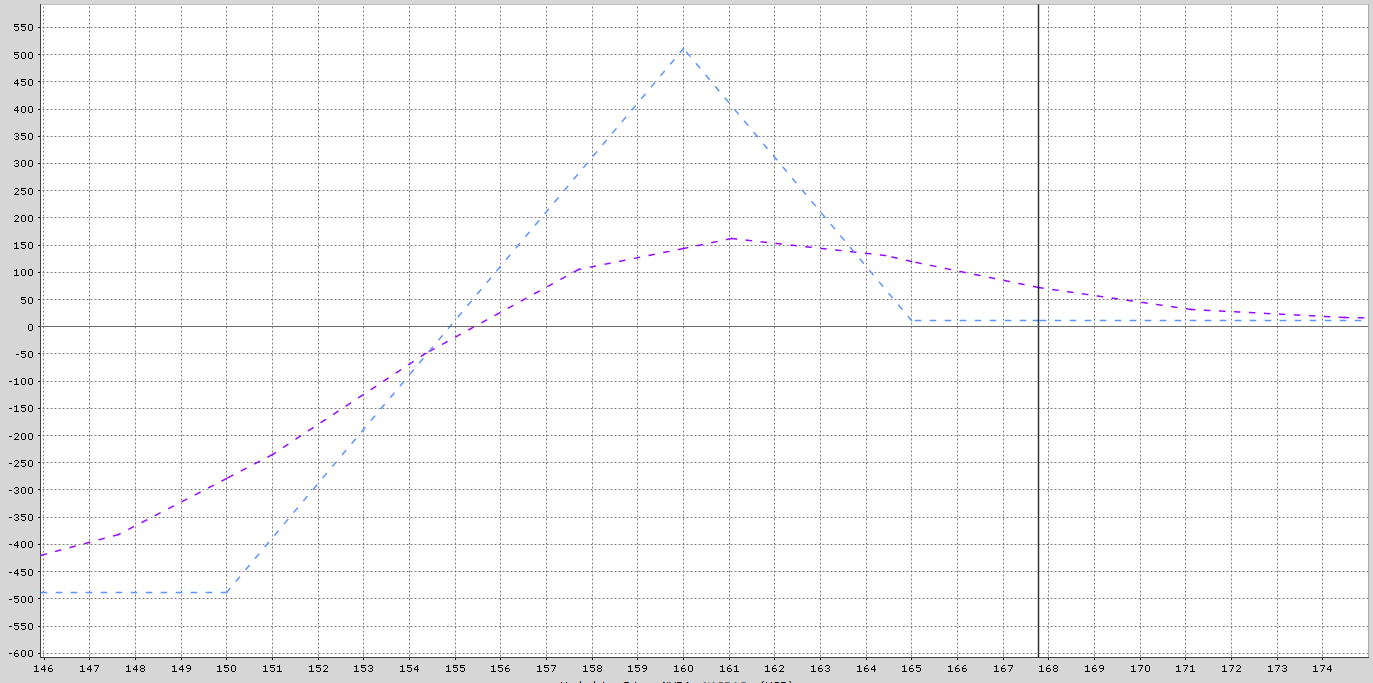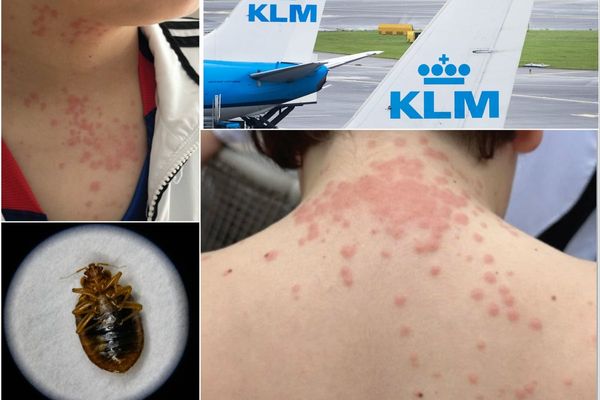
Nvidia (NVDA) is pulling back towards the rising 21-day moving average and is still in a solid uptrend.
Today we’re looking at a broken wing butterfly trade that creates a profit zone between $150 and $160 with income potential of around $85. Yesterday, the stock closed around $167.
A broken wing butterfly with puts is a butterfly spread with long put strikes that are not at the same distance from the short put strike.
A broken wing butterfly has more risk on one side of the spread than on the other.
You can also think of it as a butterfly with a “skipped strike”.
The trade is usually set up as a slightly bullish trade.
A broken wing butterfly with puts is usually created buying a put, selling two lower puts and buying one further out-of-the-money put.
An ideal setup of the trade is to create the broken wing butterfly for a net credit, in this way, there is no risk on the upside.
The main risk with the trade is a sharp move lower early in the trade.
NVDA Broken Wing Butterfly Example
On NVDA, an August 15 expiry broken wing butterfly could be set up through buying the $165 put, selling two of the $160 puts and buying the $150 put.
Here are the details of the trade as of yesterday’s close:
Buy 1 August 15, $150 put @ 1.25
Sell 2 August 15, $160 put @ 3.10
Buy 1 August 15, $165 put @ 4.85
Notice that the upper strike put is 5 points away from the middle put and the lower put is 10 points away.
This broken wing butterfly trade will result in a net credit of $10, which means that if NVDA stays above $165, the profit will be $10.
On the downside, the maximum loss can be calculated by taking the difference between the two widths (5) multiplied by 100, minus the premium received.
That gives us 5 x 100 - 10 = $490.
The maximum gain can be calculated as 5 x 100 + 10 = $510
The ideal scenario for the trade is that NVDA stays above $160 for the next month. The main expiration profit zone is between $155 and $165.
The trade starts with delta of 4, so has a slight bullish bias to start, but that will flip to slightly negative delta closer to expiry if NVDA is still above $165.
In terms of risk management, I would set a stop loss of 20% of the capital at risk, or if NVDA broke below $155.
This is what the trade looks like as of today:

You can see the main risk in the trade is a drop in price early on. The blue line is the profit and loss at expiration and the purple line is the T+0 line. T+0 just means “today”.
So, we don’t want the stock to get into the profit tent too early.
What about in three weeks’ time? How does the trade look then?

Looking a pretty good at any price above $155.
Summary
This strategy should move fairly slowly unless there is a sharp drop in the stock price.
You can do this on other stocks as well but remember to start small until you understand a bit more about how this all works.
Mitigating Risk
With any option trade, it’s important to have a plan in place on how you will manage the trade if it moves against you.
A stop loss of 20% might make sense in this scenario. If NVDA is below $160 near expiry, there will be assignment risk
Please remember that options are risky, and investors can lose 100% of their investment.
This article is for education purposes only and not a trade recommendation. Remember to always do your own due diligence and consult your financial advisor before making any investment decisions.
On the date of publication, Gavin McMaster did not have (either directly or indirectly) positions in any of the securities mentioned in this article. All information and data in this article is solely for informational purposes. For more information please view the Barchart Disclosure Policy here.






